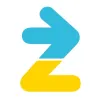
Digital Citizenship Week is October 20–24!
Join teachers worldwide to promote a healthy, positive approach to media and tech.
Take a look inside 8 images
Zearn
Pros: Thorough scaffolding and reinforcement of learned skills, great resources for live instruction, and tons of useful data.
Cons: Could use more open-ended, multiple-solution problems.
Bottom Line: It's a great balance of online lessons, in-person instruction, and instructional resources, all for free.
Zearn is very clear about the intended use for the program: Students should begin class with whole-group instruction. Next, students get in-class time working independently on digital lessons, then work in small groups with a teacher to "deepen, extend, and remediate" based on reports of student progress. It's probably best to stick to this plan: There's not quite enough digital support available to expect kids to learn everything independently, and there's not quite enough content in the digital lessons to give enough practice or the multiple perspectives so critical to mathematical understanding. Zearn's independent digital component is very good, but relying on it too heavily will not result in effective learning and may cause students to burn out.
Zearn is an online math curriculum (coupled with live whole- and small-group instruction) for grades one through eight (as of the date of this review, Zearn states that the grades seven and eight curriculum is in "Early Access"), with supplemental skills practice activities for kindergartners. Students open up to a dashboard with tasks to be completed; these include a variety of fluency warm-ups that promote general number sense and lesson-specific skills, as well as guided practice with interactive video lessons that feature diverse and enthusiastic human teachers and school-age children ("The Zearn Squad"). As part of the guided practice, the on-screen teacher will help students fill out paper-based worksheets, called notes. Students will also find an independent practice and formative assessment activity rolled into one (called the Tower of Power) and a summative exit ticket. Teachers have quick access to the curriculum from their own dashboard, the option to try out the digital student interactives, and a handy student report to help monitor and track student progress.
Should a school opt for the paid version, they'll have access to additional features. These include a math library of foundational lessons that teachers can assign to their students alongside the regular curriculum activities. Additionally, teachers and administrators will have access to more detailed student reports that recommend specific foundational lessons.
Full Disclosure: Zearn and Common Sense Education share funders; however, those relationships do not impact Common Sense Education's editorial independence and this learning rating.
Zearn has some big strengths that set it apart from other elementary digital math curricula. The first is excellent scaffolding: All lessons build from previous knowledge and spiral from accessing learned skills, from modeling new content to guided practice, independent articulation, and demonstrated mastery. This occurs at the micro level and in overall curriculum arcs. For instance, multiplication of two-digit numbers starts with already mastered single digits and adds multiples of 10, offering practice until students demonstrate mastery and before adding different values to the unit's place. Students are almost always locked into their zones of proximal development. If students are incorrect during guided practice, Zearn gives them several tries to get correct answers and helps students by doing things like narrowing down choices.
The online independent practice will help teach conceptual understanding with digital manipulatives. Likewise, it will try to correct student misconceptions with feedback. Teachers can see which concepts students were having trouble with in any given lesson. Educators must then assess these students during whole-class and group work to provide the needed instruction to close gaps. The live instruction components of Zearn are necessary to ensure that both of these areas are addressed for students. So, while more open-ended and multi-approach problems and practice would be great, the quantity and quality of these free resources is excellent.

















